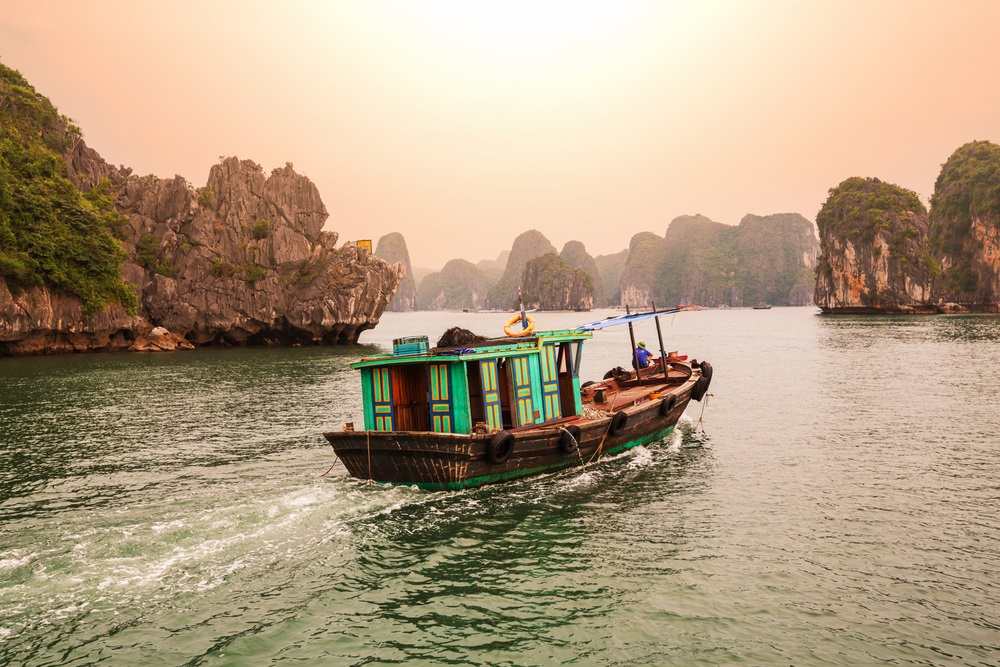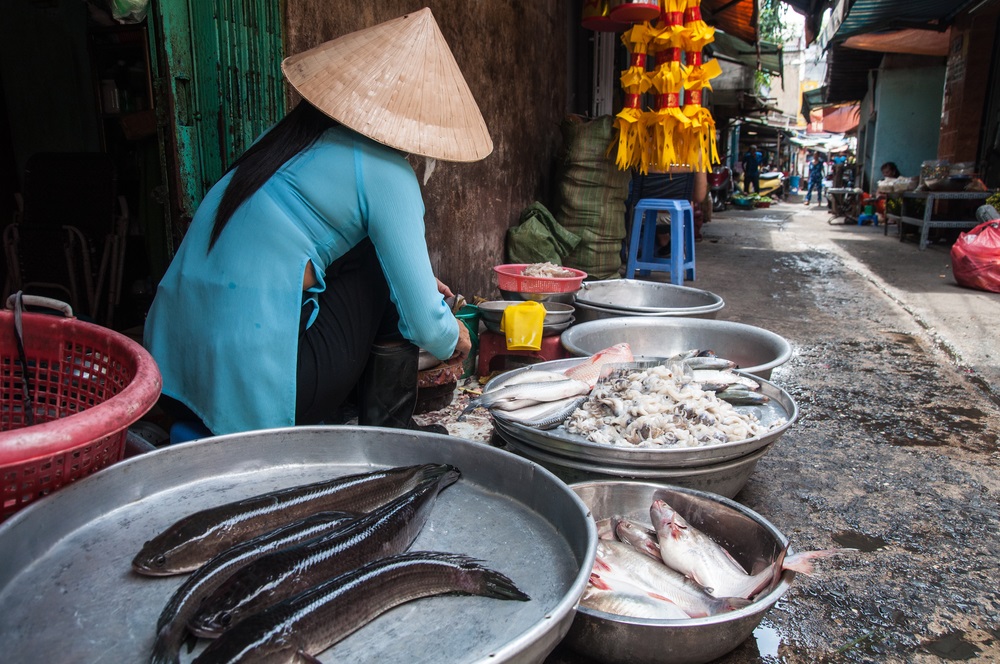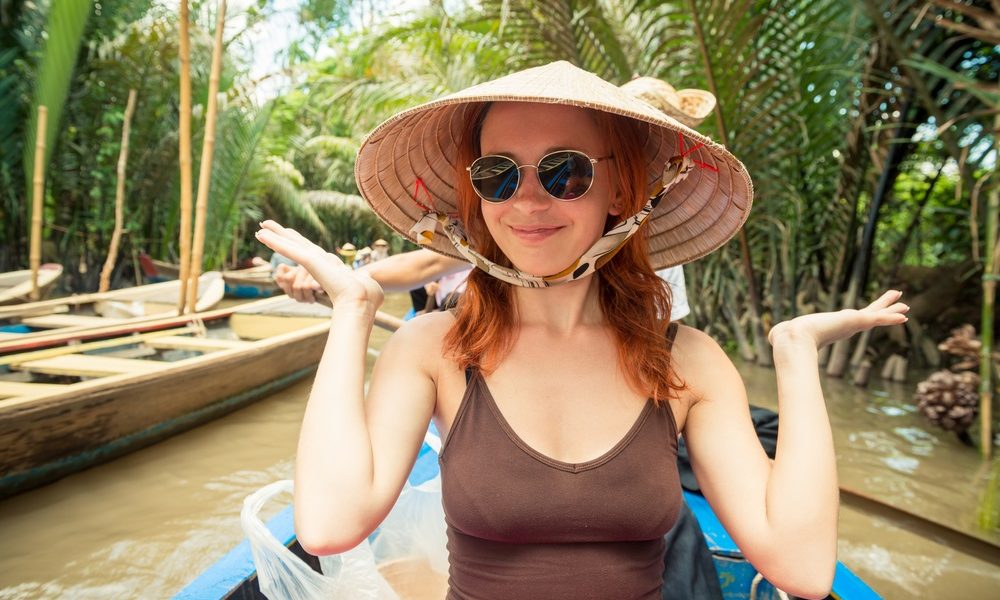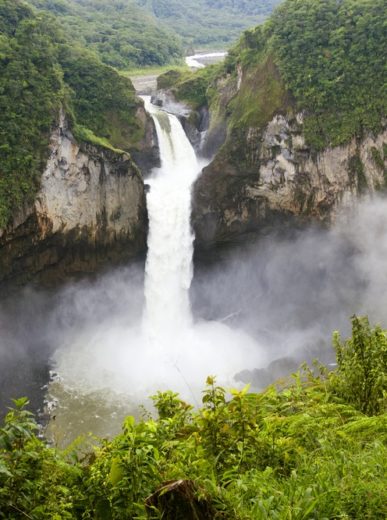Lush and lively, brimming with history, filled with untouched natural landscapes, and broiling with tempestuous delicacies, Vietnam is a country of many facets. Split into the Northern, Central, and Southern regions, each offers a unique experience that will leave you breathless. Whether you’re a foodie hoping to taste authentic Vietnamese cooking, an adventure junkie wishing to bike through an entire country, or a couple perusing your honeymoon options, Vietnam has you covered.
Cruise through Halong Bay to uncover celestial karst caves. Bike from village to village through the Mekong Delta, meeting local craftsmen and fishermen. Sample exquisite spring rolls in Hanoi. Travel back in time with a day trip fro the My Son Sanctuary and explore fascinating ruins.
Now, you before you jump on a plane to Hanoi or Ho Chi Minh City, pump your brakes and peruse our key tips for first time visitors to Vietnam.
Visas
First up, the most dreaded part of traveling: Visas. For most travelers, they’re entirely essential and completely comprehensible.
Vietnam, on the other hand, has pretty clear guidelines for international travelers. Passport wise, you’ll need one that is valid for more than 6 months. On the Visa side of things, tourists should definitely apply for a Visa On Arrival (VOA) which lasts for 3 months. If you’ve booked a Vietnam tour package the local agency can provide a letter of approval for the government.
Then you can apply for your Visa on your own or apply online through a variety of agency who specialize in VOAs. They can have your Visa to you in 5 days, the standard time, or express delivery it in 1 to 2 business days for an extra fee. Or you can bring your Letter of Approval with you to Vietnam and pay your Visa fee when you arrive at the airport.
Alex Stevenson, seen above, has broken down the process in a handy dandy video as well as the benefits to a VOA. He also has a few other guides for Vietna, so definitely give his YouTube page a look through.
Traveling to Vietnam

Now that you have your Visa and Passport, you’ll want to get your flights.
International Airports
Vietnam has 3 international airports, each conveniently located in the major cities of Vietnam’s regions: North, Central, and South. There’s no wrong airport to fly into, so we’ll just breakdown the nearby attractions and routes to take.
In the North you’ll fly into Noi Bai International Airport, servicing Hanoi, the capital. If you’re planning on visiting Halong Bay, Sapa, or want to do a scenic journey south, this is a perfect option.
For Central you have Da Nang International Airport, servicing Da Nang, from which you can travel to the ancient city of Hoi An, the archaeological sanctuary of My Son, Cham Island, the historic Nguyen capital of Hue, and Phong Nha-Ke Bang National Park, hone to the oldest karst mountains in Asia.
And lastly you have the Southern Region with Tan Son Nhat International Airport, servicing Ho Chi Minh City, aka Saigon. While Hanoi and Da Nang offer the most traditional experience in Vietnam, Ho Chi Minh City is one of the liveliest parts of the country, with a cosmopolitan nightlife and party scene. But that doesn’t mean you won’t get a bit of culture here, as you can easily take a Mekong Delta tour by local boat or bike to visit the famed Floating Markets and villages of the Mekong.
If you fly into Hanoi or Ho Chi Minh City, you can easily combine any of these experiences together into one extended trip, with domestic flights included, all for roughly USD 100 or less a day.
When to Visit
The tourist season for Vietnam is between November to March and you’ll find everything to be more expensive and crowded. That being said, you’ll also want to keep an eye out for the monsoon seasons and which region you’ll be visiting, as each have their own climates.
- North: From May to October you can expect heat, sweat, and rain as you’re right in Monsoon season. November to April is the inverse, with cool and dry weather, hence the popularity. Unlike the other two, the North experiences 4 real seasons and the most stunning changes in color throughout the year. If you pop in during the shoulders months you may that perfect equilibrium between hot and cold, wet and dry – but bring a jacket and a swimsuit to be safe.
- Central: The major cities – Da Nang, Hoi An, and Hue – are warm and dry from January to August, ripe for snorkeling around Cham Island. In contrast, expect cold showers from October to November. Each city has it’s own geographies, whether they be more coastal or mountainous, that will effect their weather. If you’re looking to for a beachside vacation, then Nha Trang is your best bet with a dry, sunny season from January to September
- South: Down near the Mekong you’ll find two season: dry and wet. Dry runs from November to early May, and wet the reverse, with heavy rainfall from June to August.
And definitely check out Hoi An Express’s breakdown for more weather advice.
Things to Keep in Mind

Vietnam is a melting pot of cultures and customs, both for foreign influences and local ethnic minorities (over 50 in total), so you’re going to experience culture shock. And that’s the best part! You’ll find a variety of Vietnam tours offering a true Vietnam experience, including visits to handcraft villages, working on a farm for a day, strolling through local markets, and getting an insider’s look at the major cities. As we mentioned above, there is something for everyone in Vietnam, and you should definitely try it all.
Now that I’ve buttered you up with a little travel inspiration, here’s a little travel advice that you’ll need and want to know before your Vietnam trip.
- If you’re on the road, bring a roll of toilet paper, especially out in the countryside.
- Haggling is not just encouraged, it is the law of the land. Never accept market prices and always be willing to negotiate – and even walk away – to get a better price.
- Stick with local tour companies and official government taxis for transportation to avoid any scam artists.
- If you fell in love with Vietnam through Top Gear’s season finale on it, you’ll definitely want to try motorbiking around Vietnam. What they didn’t tell you was that you’ll need an international drivers permit from your national transportation department to legally drive in Vietnam, so make sure to grab one before you go. You can And, as always, wear a helmet.
- Try. The. Food. You can find Western meals here and there but don’t you dare miss out on the delectable cuisine that is Vietnamese cooking.
- But definitely drink bottled water.
- Electricity is 220V, 50HZ, and a standard two-pin plug is most common.
- The officialy currency is the Dong, but you can still use US Dollars for tourist venues. Visa, MAster card and JCB are also valid for some retailers in the city, but expect a 3% surcharge.
- Emergency Numbers in Vietnam
- Police: 113
- Fire: 114
- Ambulance: 115
If you want to discover more amazing destinations or learn all the tips and tricks to planning your next vacation, please subscribe to our Tours4fun Newsletter below.






Ninh Bình is a great destination in Vietnam for all nature lovers!